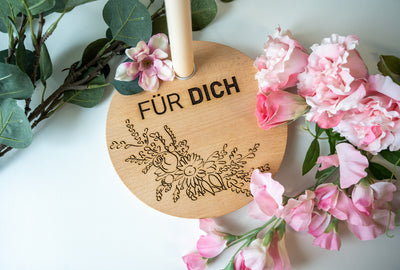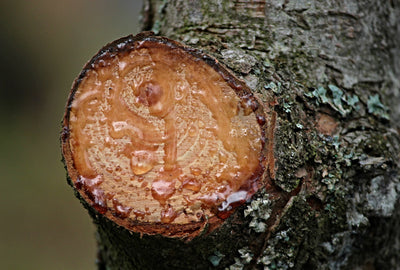Wood is a natural and versatile material that is used in many areas of everyday life. Whether used as a piece of furniture, decking or roofing, wood requires regular maintenance to maintain its beauty and durability.
In this guide, we will walk you through the most important steps in caring for and preserving wooden items, from proper cleaning to the application of protective treatments. Learn how to protect your wooden objects from moisture, pests and UV rays and keep them in perfect condition.
Wood care explained step by step

In order to properly care for wood, you should consider the following:
- Clean the wood regularly with a damp cloth or a mild detergent. Be sure to avoid overwatering the wood.
- Remove stains and dirt as soon as possible to prevent them from penetrating the wood.
- Dry the wood thoroughly after cleaning to avoid mould growth.
- Use a suitable care product to protect and care for the wood. Oiling or waxing can protect the wood from moisture and dirt while making it more supple and attractive.
- Avoid using chemicals like chlorine or acids that can damage the wood.
- Avoid too much sunlight and moisture on the wood to avoid discolouration and expansion.
It is important to ensure that the wood is always dry and clean. Regular care and maintenance can help the wood last longer and look more attractive. Otherwise, the wood quickly looks like the picture.
These maintenance steps can be followed for almost any wood, including dark beech wood. In general, it should be checked whether the wood shows any signs of damage, e.g. B. Cracks or discolouration to repair it quickly and prevent it from deteriorating.
What is the best way to protect wood from moisture?
There are several ways to protect wood from moisture. Some of them are:
- Wood impregnation: Wood impregnation agents penetrate deep into the wood and form a protective film that prevents moisture from penetrating.
- Lacquer or glaze: Lacquer or glaze forms a barrier on the surface of the wood that prevents moisture from penetrating.
- Sealing: Sealing around the wood, e.g. sealing foil or bitumen, prevents moisture from penetrating from the outside.
It is also important that the wood is well ventilated and not in direct contact with moisture such as soil or water. In general, it's best to use a combination of these methods to best protect the wood.
Which wood care products are there anyway?
There are different types of wood care products that can be used depending on the needs of the wood:
- Oils and waxes: These agents penetrate deep into the wood and protect it from moisture and pests. They also give the wood a beautiful, natural look and make it more durable.
- Impregnations: These agents protect the wood from moisture and pests without changing the natural colour. They are ideal for wooden items used outdoors.
- Paints and glazes: These agents protect the wood from moisture and pests, and at the same time give it a colour or a protective film. They are particularly useful for wooden items that are used outdoors and need a colour change.
- Cleaners and Degreasers: These are used to clean the wood of dirt, dust and old conditioners before it is repainted or impregnated.
There are also special care products for certain types of wood, such as B. Oils specifically for teak and special cleaners for oil and wax finish etc. It is important to always choose the right product for the type of wood being used.
Which oil is best for wood care?
There are many types of oils that can be used for wood maintenance, depending on the type of wood maintenance required and the type of wood to be treated. Some common wood care oils are:
- Flaxseed Oil: This is a natural oil derived from flaxseed and is highly resistant to moisture. It is particularly good for the care of furniture and doors.
- Teak Oil: Oil extracted from the tropical teak wood and known to retain the wood's natural colour and lustre. It is particularly suitable for the care of outdoor furniture.
- Tung Oil: This is an oil extracted from tung nuts and is known for its excellent weather resistance. It is particularly suitable for the care of window frames and doors.
- Oil Wax: A blend of oils and waxes that not only protects but also moisturizes the wood. It is particularly suitable for the maintenance of parquet floors.
It is important to note that before applying any oil, the wood should be spotless and the manufacturer's instructions should be followed.
Which wood needs special care?
Some types of wood require more maintenance than others to remain protected from moisture and other environmental influences.
For example:
- Softwoods such as pine, spruce or Douglas fir have a lower density and are more susceptible to moisture and pests. They therefore need a protective treatment more often than harder woods.
- Untreated wood turns gray and ages faster than treated wood. Untreated wood loses colour and becomes brittle and cracked.
It is generally a good idea to give any wood a protective treatment. Regular care and maintenance extends the life of the wood and maintains its appearance and functionality.
Which wood is less maintenance-intensive?
Some types of wood require less maintenance than others and require less protection against moisture and other environmental influences. Some examples of this are:
- Tropical woods such as teak, ipe or Moreau are usually more resistant to moisture, pests and fungi. They require less care than soft woods, but they should still be protected against graying or discolouration with wood care products.
- Thermowood is also easier to care for and less sensitive to moisture, pests and fungi. They are most often treated with heat treatments that improve their natural durability.
However, it is important to note that each material has its advantages and disadvantages. Hardwood, such as tropical woods and thermowoods, are easier to care for and less sensitive to moisture, pests and fungi, but they are also more expensive than soft woods.
Therefore, it simply depends on what requirements you have for the wood and what environmental conditions prevail to select the most suitable material.
How do I care for engraved wood?

Engraved wood is a beautiful and unique way to bring a piece of nature into your home. Especially with the Mr Beam laser cutter, very beautiful wood engravings can be realized.
To keep your engraved piece of wood in perfect condition, you can follow the same steps as above. You should pay particular attention to the following points:
- Make sure the engraving is always dry and clean. Otherwise, the motif will be distorted.
- Keep the engraving in a place where it will not be affected by direct sunlight or other light sources, as this can fade the colours.
Conclusion on wood care

In summary, careful care and maintenance of wooden items is crucial to maintaining their beauty, durability and lifespan. By following simple tips and recommendations, such as proper storage, cleaning and repairs, wooden items can be prevented from being damaged by moisture, light and chemicals.
We hope that these tips and information on caring for wood will help you to keep your wooden objects in perfect condition and give you long-lasting pleasure.




2 comments
I loved to read this blog post as the whole blog is very informative and the tips and ideas you shared are very useful for everyone.Thanks for sharing it with us.
War hilfreich, vielen Dank
K.f.b.